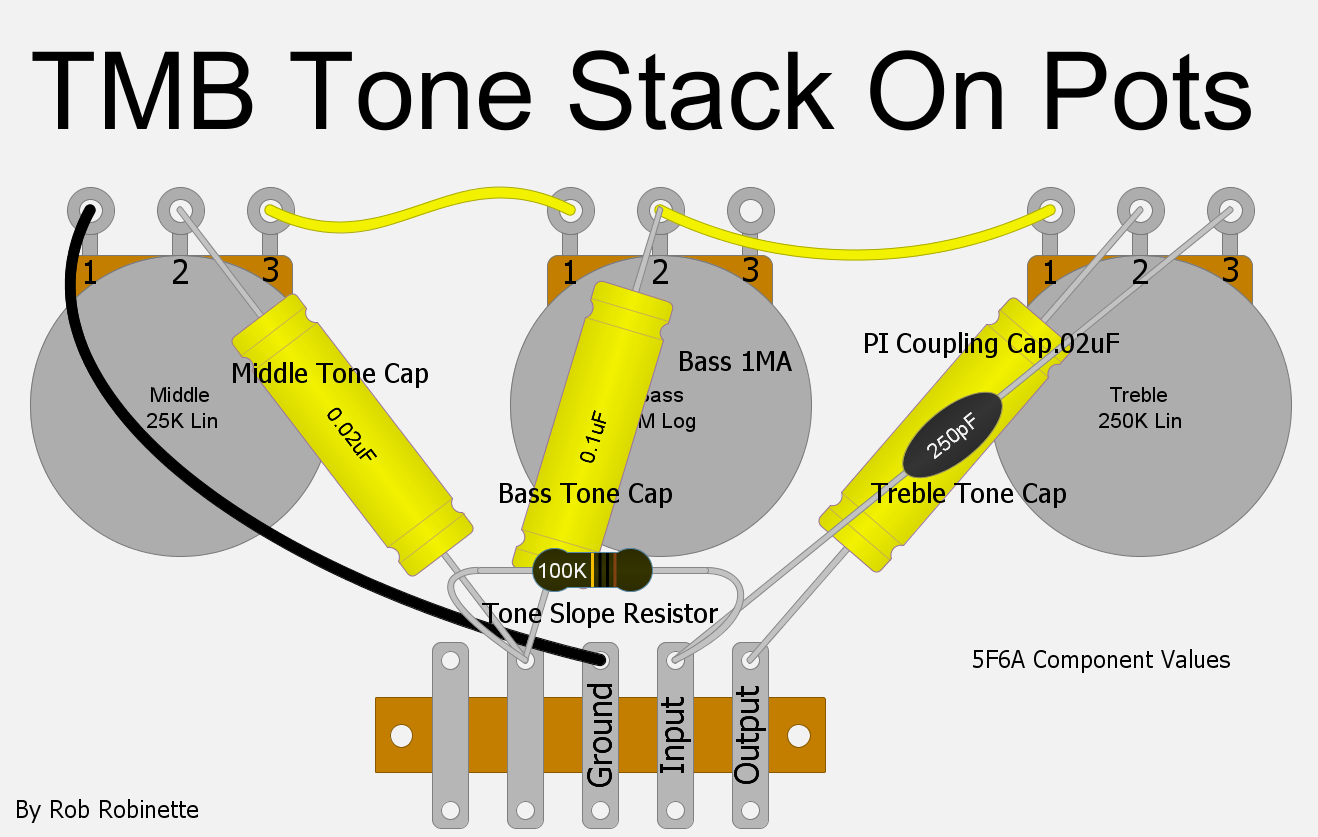There are many differing opinions as to what controls should be on a guitar amp. I am of the opinion that more knobs is always a good thing for the added flexibility they provide. Since you are looking for an amp to be used only with the output of a modeler, in theory you wouldn't need or want any tone controls. If it was up to me, I would include the usual TMBV controls with a bypass switch. A resistive divider or second volume control should be in the switch path so that the volume is about the same in either switch position.What do you feel about adding passive tone controls before TPA? Vol/treble/bass would be nice to have, but will it degrade the signal? What about active preamp module?
Experiments with a reverb tank says that the bottom of the cabinet gets the least vibration. Depending on how loud you will play, and how much bass you will make, it may not make much difference. Attempting to run pots on long wires may lead to instability and other illnesses that are hard to find and fix. If the pots are not mounted in a grounded metal piece, ground the case in some manner. I have seen floating pot cases cause instability and buzzing.I am thinking on installing amp in the speaker box. Is bottom side good place? Wiring the pots to the back panel?
I was thinking on mounting them on metal plate and plate on the back of the amp.If the pots are not mounted in a grounded metal piece, ground the case in some manner. I have seen floating pot cases cause instability and buzzing.
I can’t build that. Too complex for me. I may use passive preamp module and remove it if doesn’t work fine.If it was up to me, I would include the usual TMBV controls with a bypass switch. A resistive divider or second volume control should be in the switch path so that the volume is about the same in either switch position.
Good, should amp board sit on metal plate and plate on the wood?the bottom of the cabinet gets the least vibration.
I have done both. If the amp will get banged around a bit and there are some bulky parts mounted on a PC board, then the board must be mounted so it will not flex in use. A metal plate may help in this regard.Good, should amp board sit on metal plate and plate on the wood?
Not knowing what circuitry will be on your board, I would say that having it on a metal plate, and possibly the same plate with the controls will make for less probability of hum noise and (electrical) feedback pickup. Placing the plate at the top of the amp is OK too, as it is commonly done on commercial amps. This lets the controls and the electronics be close together, which is probably more important than physical mounting. Volume and tone control wiring is capable of picking up noise and even some of the magnetic energy that gets radiated by the speaker.
If possible get all of your electronics together with the speaker and hook it all up on a bench or table. This way you can move all of the components around to see if any don't like to be near something. Most of my guitar amp builds have been tube amps which are worse than solid state in this regard, so it may not be an issue here.
I see no mention of the power supply for this amp. A conventional transformer type supply will be heavy and radiate some line frequency energy it may want to be in the bottom of the box well away from everything else. An SMPS is cleaner but can contribute some high frequency noise (hiss).
I was thinking on mounting them on metal plate and plate on the back of the amp.
I can’t build that. Too complex for me. I may use passive preamp module and remove it if doesn’t work fine.
Good, should amp board sit on metal plate and plate on the wood?

If you want instrument level input with passive tone control , you will need a preamp in front. It would make the most sense to have high input impedance for instrument signals, a gain control and then feed a passive tone stack, then to a recovery stage to bring the overall level back up to where the TPA is happy.What do you feel about adding passive tone controls before TPA?
Where you would want to plug a modeller into this, would probably be at the recovery stage, which is a lot like plugging into the power amp section directly.
I sometimes do this on my SS amp by just plugging into the effects loop return and bypassing the input /preamp completely.